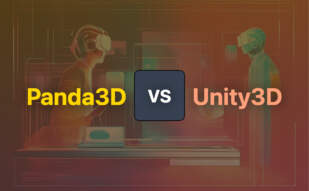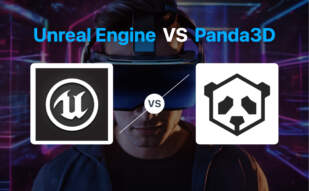Panda3D is a game engine designed for 3D rendering and game development using Python and C++. Originally developed by Disney Interactive until 2010, it is now maintained by Walt Disney Imagineering and Carnegie Mellon University. The engine, released in 2002 with the current stable release being 1.10.13 from December 2022, offers a range of functionalities crucial for 3D game creation.

Looking for alternatives to Panda3D? You may explore Unity3D, Godot, Unreal Engine, OpenGL, Ogre3D, Open3D, jMonkeyEngine, Ursina, LibGDX, GameMaker, Blender, O3DE, and more.
Unity3D
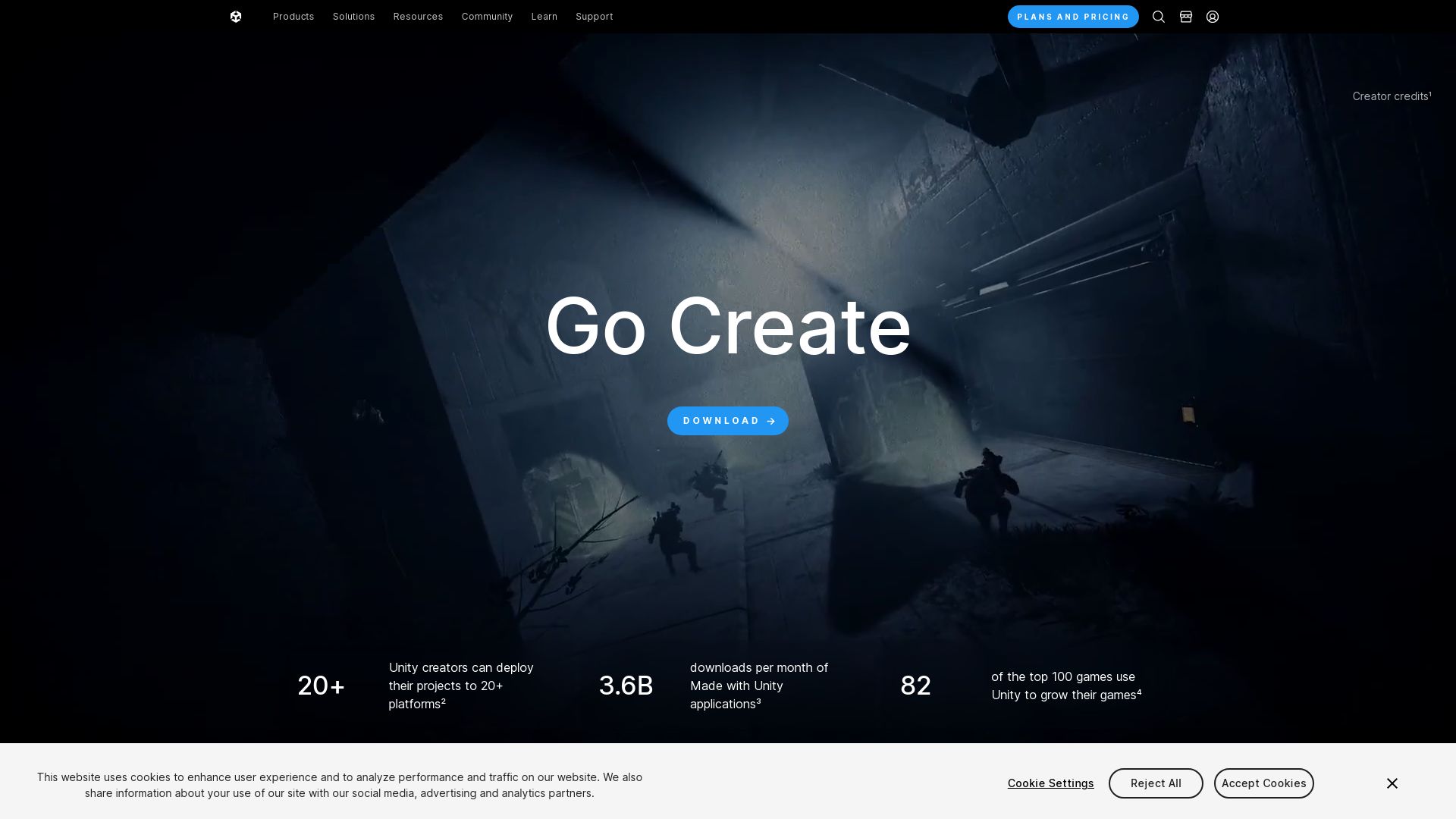
Pushing the boundaries of game development, Unity3D is an all-rounder, cross-platform game engine that since its unveiling in 2005, has been a champion of indie developers, mobile gaming, and more.
Unity3D Top Features
- Advanced Cross-Platform Support: Unity3D brilliantly streamlines development for desktop, mobile, console, and virtual reality platforms.
- 2D and 3D Creation: An impressive feature that leverages Box2D engine for 2D physics and C++ for enhancing 3D gaming performance.
- Robust Integration: Unity3D stands out with its strong compatibility with Visual Studio, C# scripting API, JavaScript scripting language, and Mono Develop IDE.
- Active Marketplace: Rife with a large collection of scripts, models, scenery, materials enriching the game development process.
| Top Features | Impact |
|---|---|
| Optimized C++ Performance | Promotes seamless, high-performance gaming experience |
| Eligibility Parameters | Flexible utility based on your financial outreach, ideal for a range of developers |
| Custom Scripting Tools | Empowers developers with enhanced creative and technical control |
Unity3D Limitations
- Political Changes: The company’s fluctuations in pricing policy have drawn community backlash
- Commercial Terms: Unity’s use is most affordable for game development up until a revenue threshold of $200,000
Unity3D Pricing
Unity3D operates on a variegated pricing structure, with tailored plans for students, personal use, and enterprises. Prices can range upwards of $1500, incorporating several tiers. A new ‘Per Install’ fee is set to roll out in 2024, further influencing the cost dynamic.
Unity3D Use Cases
Use case 1
For indie game developers, Unity3D’s user-friendly interface and extensive resources offer the ideal sandbox for creativity.
Use case 2
The engine’s strong support for mobile platforms makes it a top choice for iOS and Android game developers.
Use case 3
Its integration with a range of scripting tools and APIs caters perfectly to the needs of advanced game developers seeking optimized performance.
Godot
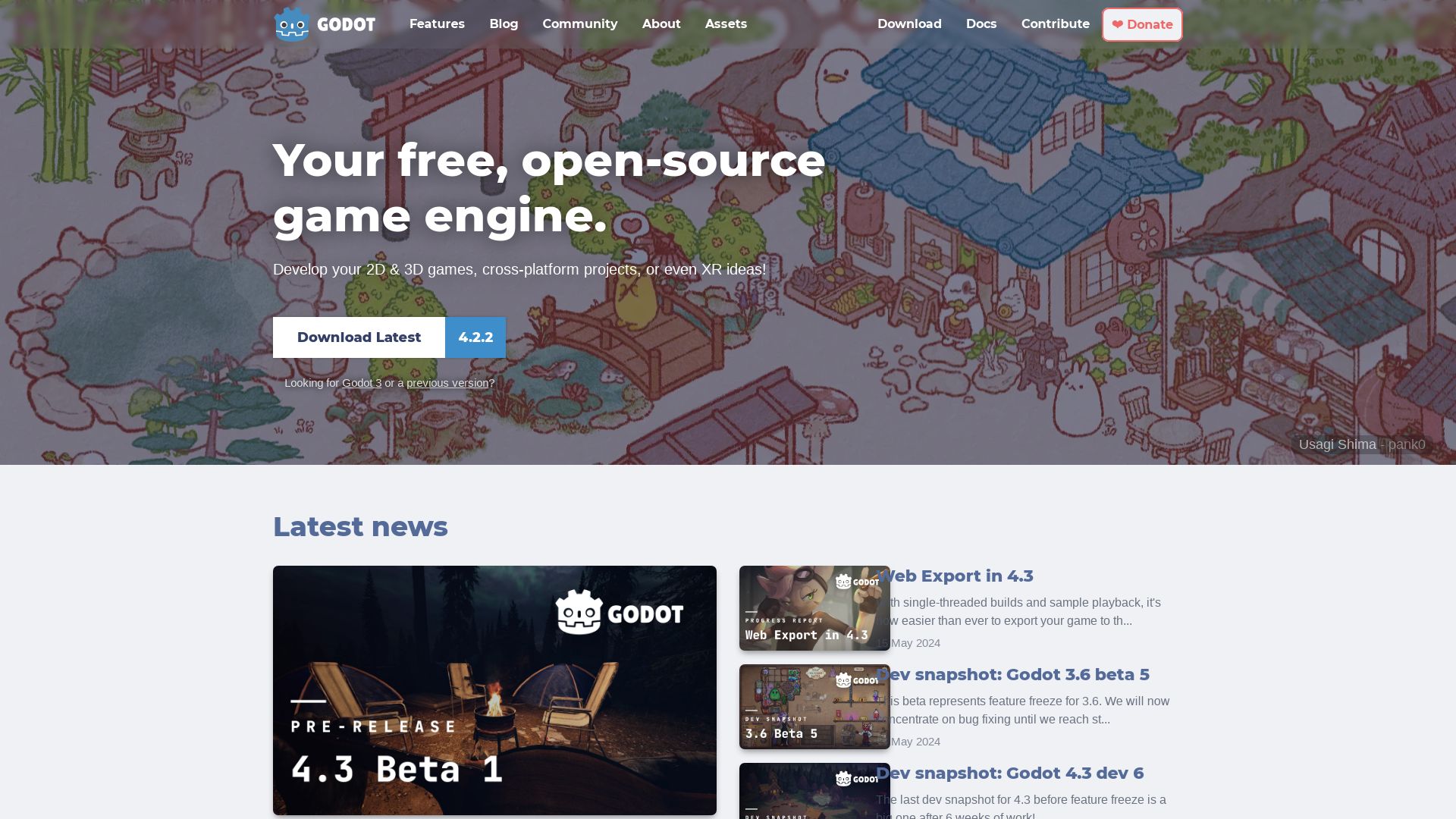
Welcome to the world of Godot! An open-source game engine lighting the game development scene on fire. Embrace the charm of scene-driven design and game creation from the simplest of blocks!
Godot Top Features
- Intuitive scene-driven design that speaks to both novices and experienced developers.
- Ability to create full-featured components by combining scenes.
- Built-in scripting language GDScript tightly integrated to ensure streamlined game logic.
- Zesty 3D engine supporting both high and low-end devices, ensuring a dynamic gaming experience.
- Open-source, user-owned games free from licensing fees, contracts or hidden charges.
| The engine has a special 2D workflow designed for games and apps, blending flexibility and creativity. | A gem for designers who work in Blender, Godot allows direct import of Blender files, making life extraordinarily easier. |
| Commits to regular updates and improvements, providing continued flexibility and customization. | Jump-start your development journey with Godot’s visual editor built into the engine for coding, built for simplicity at heart. |
| Supported by a range of languages including GDScript, C++, and C#, and community backing for Rust, Nim, Haskell, Clojure, Swift & D. | Strong storage solution designed for team collaboration. |
Godot Limitations
- Though it’s a powerhouse for many game types, Godot may not be suitable for complex 3D game development.
- Despite a great set of features, Godot compared to Unity & Unreal Engine does fall short in certain aspects.
Godot Pricing
Good news for the budget-conscious! With Godot, you’re not weighed down by pricing constraints. It’s free! Thanks to its MIT license, you can dive into game-making without dipping into your pocket.
Godot Use Cases
Use case 1
Godot, with its intuitive scene-driven design, is perfect for beginners entering the gaming realm, providing a supportive, and simple start to your gaming adventure.
Use case 2
Experienced game developers longing for flexibility and customization, Godot’s open-source and modifiable codebase coupled with support for multiple languages is the perfect ally for your creative endeavors.
Use case 3
Are you part of a team that works with Blender? Godot has got you covered with its direct import of Blender files, allowing you to focus on the art and leave the technicalities to itself.
Blender

Flush the predictable. We’re talking about Blender, a formidable contender to Panda3D. It’s a free, open-source 3D computer graphics toolset with an illustrious history dating back to 1994, continuing to upstage its counterparts with its chameleonic adaptability for animated films, VR, 3D-printed models, and more.
Blender Top Features
- 3D Modelling: Elevate your game with immersive 3D models exploiting Blender’s extensive toolset.
- UV Mapping and Texturing: No more dull, flat designs. Blender lets you add life-like textures to your models.
- Digital Drawing and Raster Graphics Editing: Unleash your inner artist with Blender’s robust drawing tools.
- Animation and Rendering: Bring your ideas to life with powerful animation and rendering capabilities.
- Video Editing and Compositing: No need for third-party tools when Blender can do the job.
Alembic, 3DS, FBX, and others.
| Developed by | NeoGeo and its main developer, Ton Roosendaal. |
| Supported OS | Linux, macOS, Windows, BSD, Haiku. |
| Supported 3D file formats |
Blender Limitations
- Blender Game Engine is depreciated since 2.8 release.
- Blender Internal removed in 2.80 release, favoring Eevee renderer.
Blender Pricing
Brush off those price-tag worries: Blender is entirely free! It’s open-source, backed up by a community of enthusiasts, and won’t cut a hole in your pocket.
Blender Use Cases
Use case 1: Animated Films
Blender shines in the realm of animation, powering stunning graphics for blockbusting animated films. Use it to create compelling narratives that captivate.
Use case 2: 3D-Printed Models
Blender facilitates the creation of three-dimensional models with excruciating detail; ideal for 3D printing enthusiasts and professionals alike.
Use case 3: Interactive 3D Applications
Armed with Blender, developers can produce interactive 3D applications that redefine user engagement and experience.
O3DE
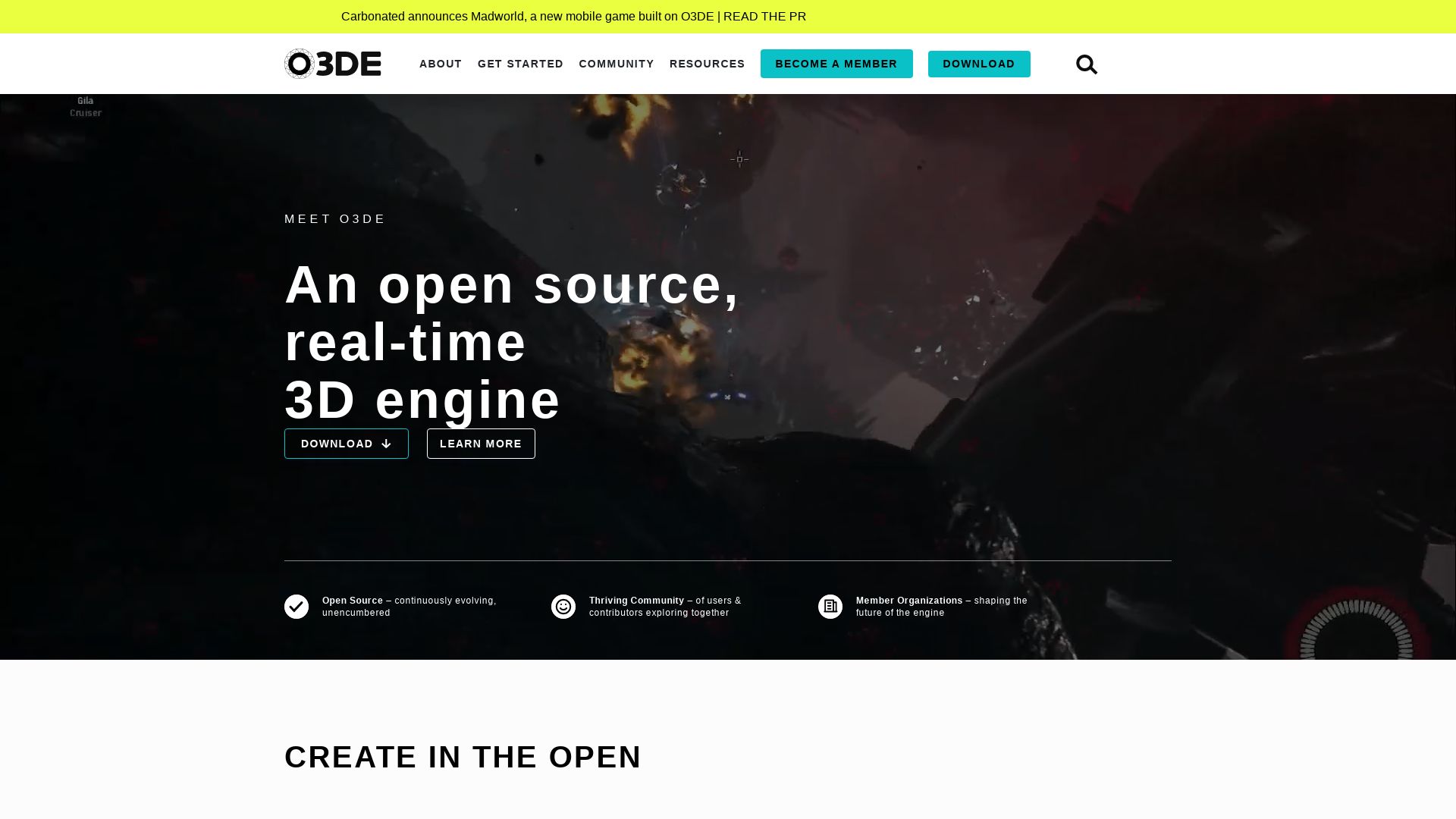
Open 3D Engine, known as O3DE, is a versatile open-source, real-time 3D engine developed by the Open 3D Foundation. It acts as a gateway for creating interactive, high performance experiences via simulating physics, animation, and cinematics. O3D boasts its use in complex gaming and simulation development, making it a unique alternative to Panda3D.
O3DE Top Features
- Written in a mix of C++, Lua, and Python
- Composed of Gems – modular engine components with standard interfaces
- Essentially an evolution of Amazon Lumberyard
- Supported extension languages include C++, GDScript, C#, and Unity’s C#
- Strong industry support including companies like Adobe, AWS, Huawei, and Intel
| Key Feature | Benefit |
| Physically-based renderer | Delivers more realistic graphics |
| Script Canvas or Lua for runtime logic | Allows flexibility in scripting and programming |
| Python scripting support and high-performance math libraries | Supports complex logics and calculations |
O3DE Downsides
- Dependency on Visual Studio 2019 and CMake which might limit the user’s options
- Lesser known and younger as compared to its competition like Unreal, Godot, and Unity
- Previously based on Lumberyard, which received middling reviews
O3DE Pricing
O3DE is royalty-free and its source code is open for modification and extension, reinforcing its credo of accessibility and flexibility.
O3DE Use Cases
Use case 1
Packed with a set of powerful features, O3DE makes for a great choice for game developers who are looking to build complex games and simulations.
Use case 2
For developers working on 3D simulations for training or analysis purposes, O3DE presents a reliable and feature-rich solution.
Use case 3
Companies seeking to develop interactive experiences for advertising or branding purposes can leverage the interactive rendering capabilities of O3DE.
Unreal Engine
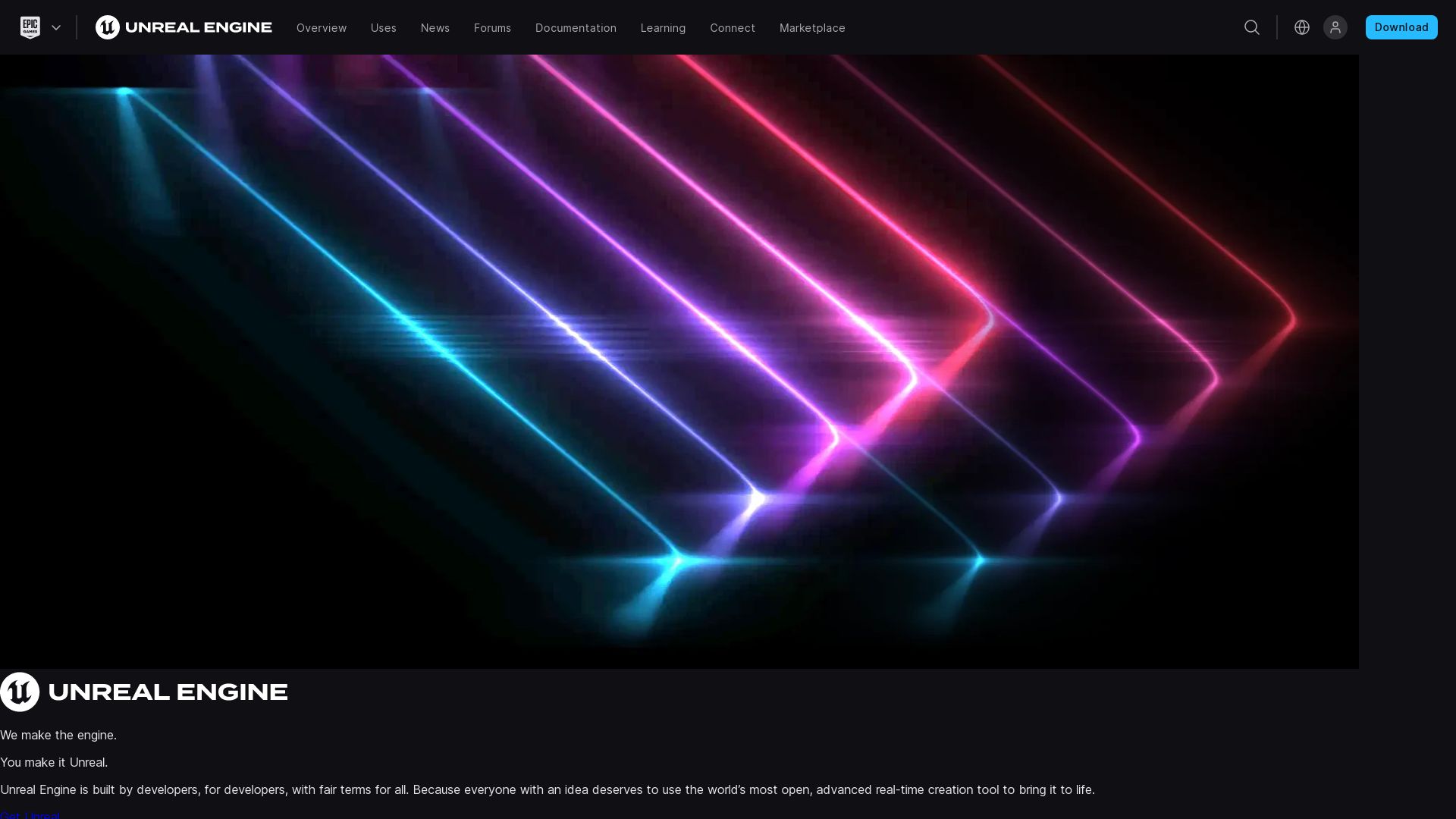
The Unreal Engine, a series of top-tier 3D graphics game engines, is brought to you by the renowned conglomerate, Epic Games. Originated in 1998, it has remarkably evolved over the years, with Unreal Engine 5, the latest version, launched in April 2022.
Unreal Engine Top Features
- Multi-platform support: Compatible with desktop, mobile, console, and VR platforms.
- Robust Language: Primarily written in C++, enabling efficiency and complexity.
- Editors: Includes UnrealEd, a level editor, supporting real-time constructive solid geometry operations.
- Modding Friendly: Unreal Engine 3 allowed modders extensive access.
- Marketplace: Facilitates exchange of creations with the Unreal Engine Marketplace.
- Academic accessibility: Free access for educational establishments.
| Comprehensive SDK | The Unreal Development Kit (UDK), a free version of UE3’s SDK, rolled out in 2009 has revolutionized the industry. |
| Template Variety | Offers numerous basic project templates creating a variety of gaming experiences. |
| Alliance Driven Development | Epic Games has a growing network of strategic alliances to take its software to a global audience. |
Unreal Engine Limitations
- Complex language: While C++ enables high-end development, it may present a steep learning curve for beginners.
- Costly for commercial use: Imposes a 5% charge on revenues over USD 1 million.
Unreal Engine Pricing
A 5% revenue charge comes into play for commercial projects yielding over $1 million. However, the royalty model is waived when games are published on the Epic Games Store. For educational institutions, it is made available free of charge.
Unreal Engine Use Cases
Use case 1: Game Development
Developers can leverage the Unreal Engine for building high-performance PC first-person shooters, as it was originally intended, or branch out to other genres.
Use case 2: Film and Television
Unreal Engine’s advanced capabilities have found their way into film and television production, providing a cost-effective and efficient substitute to traditional methods.
Use case 3: VR Platforms
VR platform creators can utilize Unreal Engine’s cutting-edge technologies to craft immersive virtual reality experiences.
OpenGL

An offspring of the Silicon Graphics’ legacy of the early 90s, OpenGL (Open Graphics Library) embodies the evolution of the 3D graphics realm. While it started as IRIS GL (Integrated Raster Imaging System Graphics Library), its progression led to its current form managed by the adventurous collective, the Khronos Group.
OpenGL Top Features
- Sophisticated Rendering and Modelling: Originally constructed for hardware-accelerated 3D graphics, it’s an understatement to mention OpenGL’s prowess in rendering and modeling functions.
- Accelerated Augmented and Virtual Reality: Its application transcends the boundaries of mere software, providing immense utility to Augmented & Virtual Reality projects.
- Compatibility Across Platforms: OpenGL’s use is widespread, from video gaming and CAD to scientific applications, becoming a versatile tool in a multitude of environments.
- Continual Evolution: From version 1.0 to the latest 4.6, OpenGL continually integrates into its DNA new functionalities and enhancements tailored to the ever-advancing tech landscape.
| Version | Key Features |
|---|---|
| OpenGL 3.3 | Marked as the first “Modern OpenGL” version |
| OpenGL 4.3 | Introduced Compute Shaders, image copying, compatibility with OpenGL ES 3.1 |
| OpenGL 4.6 | Added SPIR-V language for shader definition, expanded Atomic Counter functionalities, function references and more |
OpenGL Limitations
- Prerequisite knowledge in C++ programming is required.
- Some mathematical understanding in areas like linear algebra, geometry, and trigonometry is essential for leveraging OpenGL’s full potential.
- The reliance on extensions to access advanced hardware-specific features might necessitate additional learning curves.
OpenGL Use Cases
Video Game Development
The commercial gaming industry, with pioneers like ID Software’s Quake series, frequently utilize OpenGL for their graphics engines, making the software a staple in the gaming world.
Scientific Applications
With its roots in Silicon Graphics Inc., a leader in 3D graphics for workstations, OpenGL is an ideal choice for various scientific applications that require high-quality and complex rendering.
Augmented and Virtual Reality
Given its design for hardware-accelerated 3D graphics, OpenGL shines in the burgeoning fields of Augmented and Virtual Reality, facilitating the creation of immersive, lifelike virtual environments.
Ogre3D

Crafting the realm of graphics with powerful hardware acceleration, Ogre3D stands as a force in the world of 3D graphics applications. This engine, designed with C++ and integrated with systems like Direct3D and OpenGL, harbors an impressive versatility and operates seamlessly with other libraries. Not limited to gaming, this engine bears relevance to simulations and business applications as well.
Ogre3D Top Features
- Highly integrated with various libraries: sound, networking, AI, collision, physics.
- API designed for easy Integration with any set of libraries.
- Packed with features: bump & offset mapping, shadows, physically based shading, particle effects.
- Platform independent with diverse porting options: Windows, macOS, Linux, PocketPC, Xbox, PS3.
| Year Of Evolution | Key Events |
|---|---|
| 1999 | Development started by Sinbad |
| 2000 | Registered on SourceForge |
| 2001 | First Render released |
Ogre3D Disadvantages
- Physics engine specifics are unclear due to engine’s preference for turn-based gaming.
- Lack of specificity in its orientation towards gaming or simulations.
Ogre3D Licensing
Embrace the world of powerful rendering with Ogre3D free of charge. Operating under the open-source MIT License.
Ogre3D Use Cases
Use Case 1: Game Development
Exploring the terrain of game development, from open-world saga of OpenMW to the heavily social platform of Roblox, Ogre3D provides a modular solution.
Use Case 2: Simulations
Aiming for realism and accuracy? The Gazebo simulator leverages Ogre3D to deliver high-quality, authentic simulations for developers—invaluable for business applications or scientific research.
Use Case 3: Business Applications
Not limited to gaming or simulations, Ogre3D’s hardware-accelerated 3D graphics integrate seamlessly into business applications, offering a visually arresting user experience.
Open3D

Meet Open3D, your sprightly dance partner in the 3D data software development. This open-source library knows its steps in both the C++ and Python dance floor. With its back-end optimized like a ballet dancer and capable of parallelization gymnastics, Open3D is a nimble performer in the world of 3D.
Open3D Top|Best Features
- Specialized moves in 3D data structures, processing algorithms, scene reconstruction, and surface alignment.
- Sports a cool shade of physically-based rendering (PBR) and GPU acceleration for 3D operations.
- Compatible with PyTorch and TensorFlow – making it the “wear all, do all” tool.
- A Python API that lets you create, manipulate 3D geometries. It’s like Play-Doh for grownups, but in 3D and on your computer.
| Don’t worry about OS | Has pre-built pip packages for Ubuntu 18.04, MacOS 10.15, and Windows 10. |
| It has its own Viewer App | Open3D-Viewer app is available for Ubuntu, MacOS, and Windows. |
| A friendly community | Actively engages with its users through Github issues, Forums, and Discord chats. They even take bug reporting and feature requests! |
Open3D Downsides
- Despite all the features, it insists on being properly introduced via a citation of the Zhou2018 work whenever it’s used. Quite the formal one, isn’t it?
Open3D Pricing
“Free as the wind” can be its middle name because Open3D is an open-source library. Meaning you can use it without burning a hole in your pocket!
Open3D Use Cases
Use case 1
Are you a 3D machine learning enthusiast? Do you eat and sleep convolutions and tensors? Then Open3D, with its compatibility with PyTorch and TensorFlow, is the one for you.
Use case 2
If scene reconstruction and surface alignment are your jam, Open3D can be your trusty sidekick, helping you to save the virtual day.
Use case 3
Whether you’re a Python coder or a proud C++ programmer, Open3D is as multilingual as they come, easing your way into the world of 3D data software development.
jMonkeyEngine
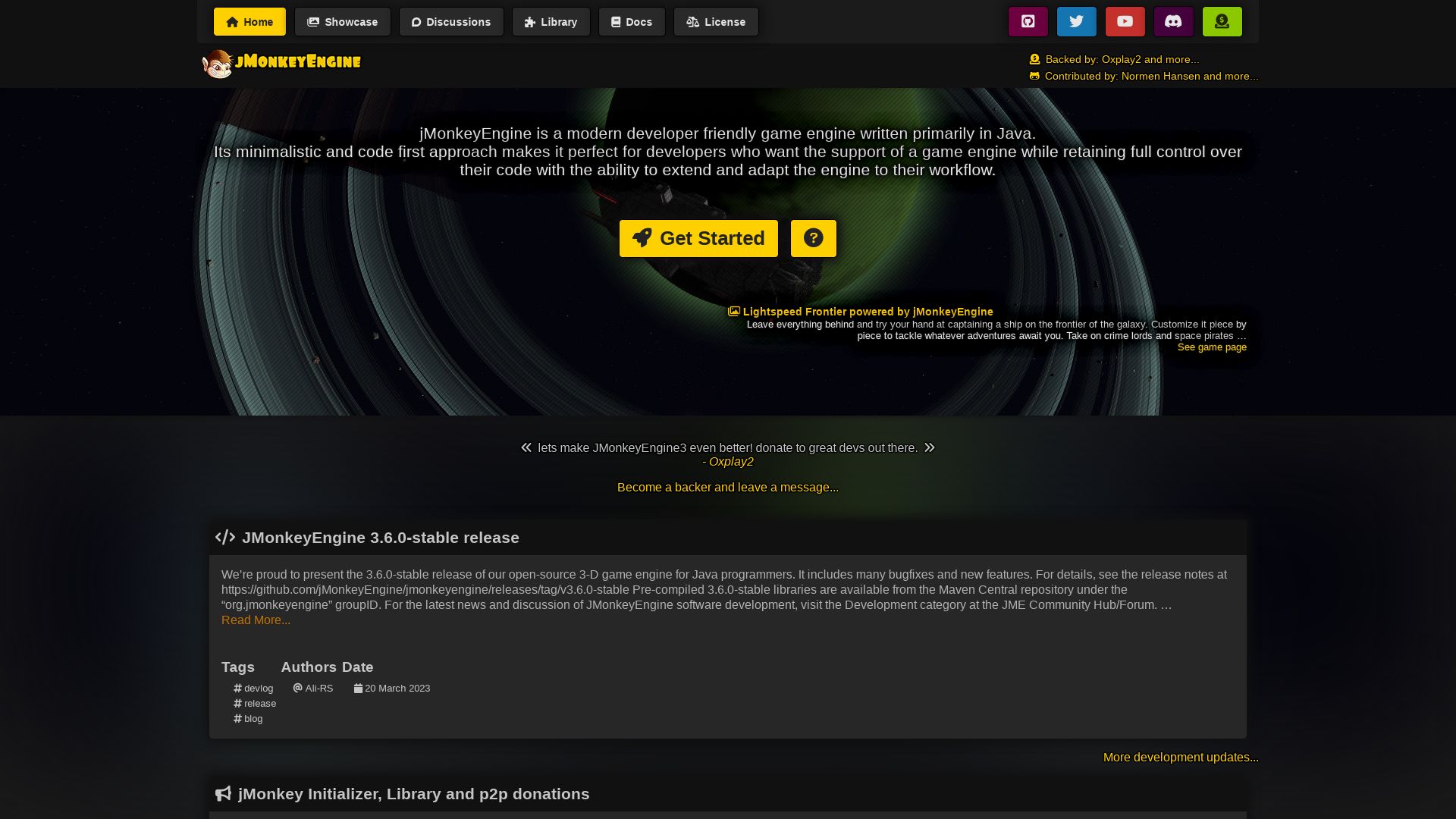
A perennial disruptor, jMonkeyEngine is a Java-based game engine flexing its muscle on the NetBeans Platform. Practical and code-first in approach, it’s no wonder intrepid developers, big and small, are falling head over heels for it.
jMonkeyEngine Best Features
- Minimalistic, code-first approach.
- Open-source 3D game engine for Java programmers.
- Stable 3.6.0 release with features and bugfixes galore.
- Gems like ‘jMonkeyEngine Initializer’, a web tool for simplified project creation.
- Library-rich – you’ll find the 3.6.0-stable libraries on Maven Central repository under groupID ‘org.jmonkeyengine’.
- Support for cross-platforms and 3D audio.
- Networking options such as Spidermonkey, SimEthereal, and Monkey Netty.
- Spatial-Control model, Zay-ES and other paradigms to play with.
- Where others charge, they offer free, open-source platform with a permissive BSD 3-Clause license!
| Game Development Tool | Advantages |
|---|---|
| jMonkeyEngine | Lower-level, yet high-quality game creation capabilities. Beginner-friendly with comprehensive documentation and support. |
| jMonkeyEngine | Preferred over Unity for its easier adaptability and learning curve, despite some limitations. |
jMonkeyEngine Limitations
- While it’s power-packed, it might be too code-saturated for some. Some who prefer a graphical, user-friendly software might find themselves needing a bit more time to adapt.
- It’s competitive, but certain game development aspects might not be as advanced as those in higher-end engines.
jMonkeyEngine Pricing
Dig this: jMonkeyEngine is 100% free and open-source under a permissive BSD 3-Clause license. A groundbreaker, indeed.
jMonkeyEngine Use Cases
Use case 1
jMonkeyEngine is perfect for Java programmers seeking an edge. Its Java-based engine makes it a mainstay among developers.
Use case 2
Educators, perk up! jMonkeyEngine has a foothold in game-education programs. Instruct while innovating – a win-win.
Use case 3
Got your eyes on the RPG genre? MMOs too? jMonkeyEngine is just what you need. With acclaimed RPGs like Mythruna developed on it, you know you’re onto a winner here.
Ursina

A shimmering jewel in the sphere of game development engines, Ursina launched in 2019 as a free, open-source project. This engine, polished by the hands of global collaborators, is compatible with Linux and Windows.
Ursina Top Features
- Built in Python, Ursina relies chiefly on the Panda3D library, opening a global avenue for Python aficionados.
- It delivers power to the creators, enabling code and texture adjustments during the game testing phase.
- Being adept at building both 2D and 3D games, it gracefully accepts Photoshop and Blender models.
- Features a developing scene editor for interactive model placement, bridging digital creativity and functionality seamlessly.
- Ursina employs Python game engines and supports C++, enhancing its versatility and global appeal.
- Gleaming with components such as processing user-input, game speed control, and display, providing a well-rounded gaming experience for developers and players alike.
- Compatible with giants such as Godot, Unreal Engine and Unity, standing tall amidst the dynamic world of game engines.
| Integration | Developed in |
|---|---|
| Open-Source Navigation mesh and pathfinding libraries | 2010 |
| Bullet Physics Library | 2000 |
| Soft-body physics and GLSL shaders | 2.48 Release |
Ursina Disadvantages
- Requires Python game engine installation, which can be a hurdle for novice developers.
- Despite compatibility with other programming languages, its primary focus and advantage lie in Python. Limited for developers unfamiliar with Python.
Ursina Pricing
Reflecting the spirit of digital inclusivity, Ursina is an open-source project, making it free for all avid game developers.
Ursina Use Cases
Use case 1
Ursina with its rich, Python-oriented structure serves as an excellent tool for developers comfortable with Python scripting.
Use Case 2
For independent creators and budding developers, Ursina, being open-source and free, is a purse-friendly start.
Use Case 3
Ursina’s compatibility across platforms and its adaptability with different engines makes it desirable for more seasoned developers aiming for platform diversity.
LibGDX
Enveloping the world of game development in a veil of ingenuity, LibGDX is a reputable Java game development framework that has garnered respect for over a decade. Its commitment to unification across numerous platforms testifies to its versatility, and its finely granulated control brings the crafty creator face to face with the canvas of imagination. Leveraging the powerful Java ecosystem, it stands as an open-source tool teeming with potentials.
LibGDX Top Features
- Unified API targeting various platforms like Windows, Linux, macOS, Android, iOS, Web.
- Versatility in rendering via OpenGL ES 2.0/3.0.
- Audio streaming for WAV, MP3, OGG and direct PCM sample playback and recording.
- Input handling for diverse tools and gesture detection support.
- 2D physics via Box2D physics, 3D physics via Bullet physics.
- Offers seamless integration of game services like Google Play Games, Apple Game Center, Steamworks API, and more.
| Integrated Tools | APIs and Supports |
|---|---|
| Firebase Integration | High level APIs include Orthographic camera, sprite batching & caching, texture atlases, bitmap fonts, 2D particle system, TMX tile map support |
| AdMob Integration | 3D APIs include lighting systems, GLTF 2.0 support, VR support |
| Networking: TCP sockets, HTTP requests, WebSocket support | Supports OpenGL ES 2.0/3.0 rendering |
LibGDX Limitations
It’s worth noting that LibGDX is not without its challenges. Although its depth might empower the meticulous developer, it calls for a certain level of aptitude in programming. Additionally, the code-centrism, while offering granular control, might overload the novice.
LibGDX Pricing
One of the compelling elements that make LibGDX stand apart is its dedication to accessibility. As a reflection of this ethos, it is completely free to use and fully open-source, allowing you to harness all its features sans any financial commitments.
LibGDX Use Cases
Use Case 1: Competitive Mobile Gaming
With its gamut of features such as audio streaming, input handling, and seamless integration of game services, LibGDX is ideally suited for competitive mobile gaming development. Its 2D and 3D physics capabilities aid in creating a riveting and responsive gaming environment.
Use Case 2: Cross-Platform Game Development
The Unified API enables effective cross-platform game development. Whether targeting desktops, mobile iOS, Android, or HTML platforms, LibGDX provides the necessary interoperability and versatility for a broad reach.
Use Case 3: Immersive VR Experiences
By leveraging its VR support and 3D APIs, LibGDX can be used to create immersive Virtual Reality experiences, and extend the realm of interactive gaming.
GameMaker
An engine designed for beginner game developers and 2D games, GameMaker is renowned in the community for its simplicity and scalability. Some of its famous creations include Undertale, Forager, and Chicory: A Colorful Tale.
GameMaker Best Features
- Scalable Design: A standout feature loved by Gabriel Gonçalves (Gagonfe), Carl Pilon (Orange Pylon Games), Gabe Weiner (lazyeye)
- Editor Support: Language Server for Syntax Highlighting and Intellisense support enables the engine to support multiple languages like GLSL, HLSL, JSON, XML etc.
- AI Support: Owing to their partnership with OpenAI, GameMaker is set to integrate AI for a more simplified game-making process
| Feature | 2023 Updates |
|---|---|
| New Code Editor | The new Code Editor will provide access to objects, events, and functions in a full-screen window. |
| Mod Support | Mod.io extension to help developers in adding user-generated content to your game. |
GameMaker Limitations
- It is a 2D game engine, limiting its capabilities for 3D game creation.
GameMaker Pricing
GameMaker offers various tiers: Free, Creator (aimed at game development careers on desktop stores), Indie (provides multiple export options for game release), and Enterprise (for studio releases on major consoles).
GameMaker Use Cases
Use Case 1: Beginner game developers
Due to its simplicity and scalability, GameMaker is an excellent choice for beginner game developers looking to create 2D games.
Use Case 2: 2D game development
GameMaker’s specialized focus on 2D game development has led to the creation of indie hits like Undertale, Spelunky, Nuclear Throne, and Hotline Miami.
Use Case 3: Developers planning on user-generated content
GameMaker’s future mod.io extension allows developers to easily add user-generated content to their games.
Hannah Stewart
Content writer @ Aircada, tech enthusiast, metaverse explorer, and coffee addict. Weaving stories in digital realms.



